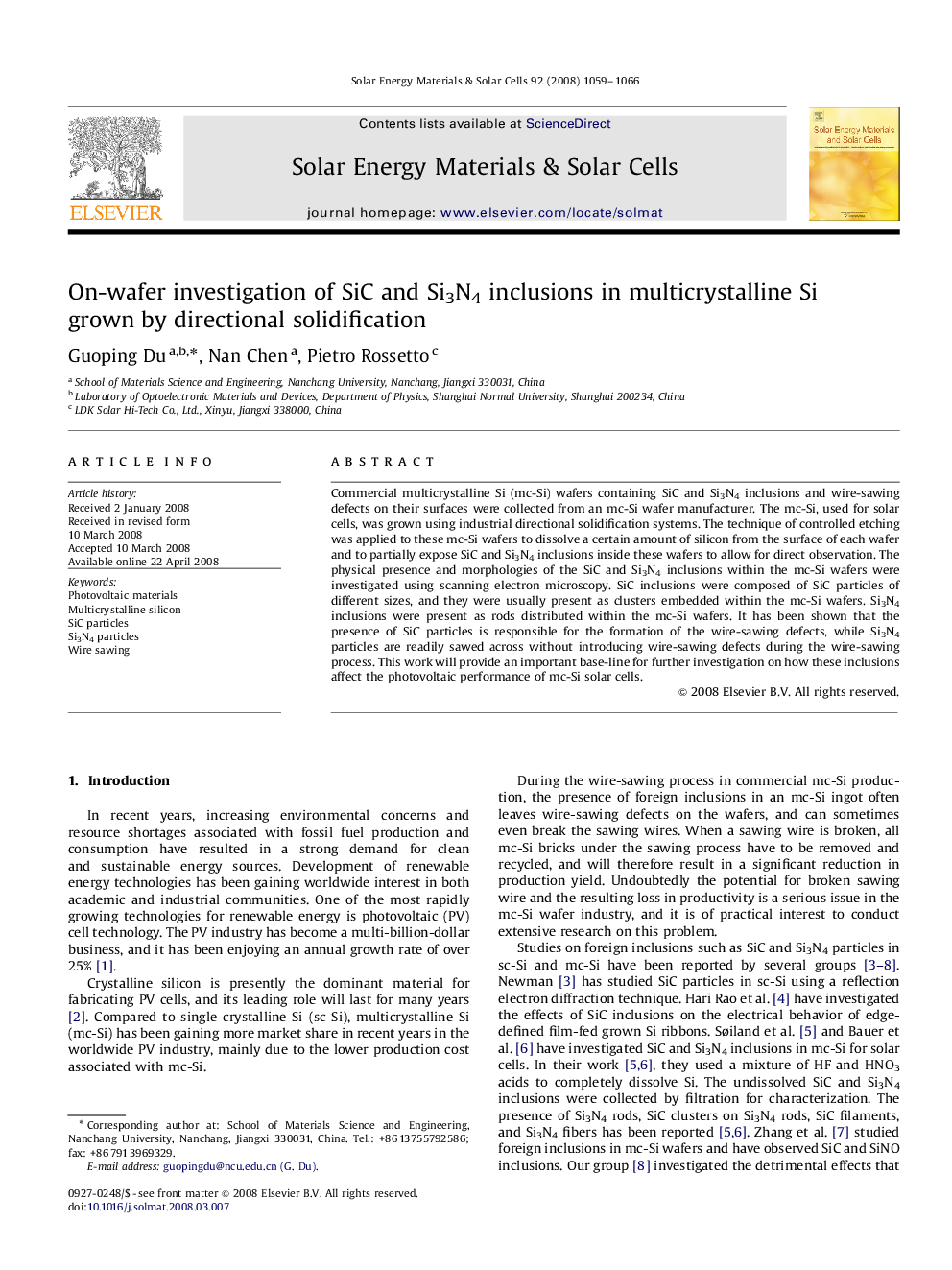| Article ID | Journal | Published Year | Pages | File Type |
|---|---|---|---|---|
| 80061 | Solar Energy Materials and Solar Cells | 2008 | 8 Pages |
Commercial multicrystalline Si (mc-Si) wafers containing SiC and Si3N4 inclusions and wire-sawing defects on their surfaces were collected from an mc-Si wafer manufacturer. The mc-Si, used for solar cells, was grown using industrial directional solidification systems. The technique of controlled etching was applied to these mc-Si wafers to dissolve a certain amount of silicon from the surface of each wafer and to partially expose SiC and Si3N4 inclusions inside these wafers to allow for direct observation. The physical presence and morphologies of the SiC and Si3N4 inclusions within the mc-Si wafers were investigated using scanning electron microscopy. SiC inclusions were composed of SiC particles of different sizes, and they were usually present as clusters embedded within the mc-Si wafers. Si3N4 inclusions were present as rods distributed within the mc-Si wafers. It has been shown that the presence of SiC particles is responsible for the formation of the wire-sawing defects, while Si3N4 particles are readily sawed across without introducing wire-sawing defects during the wire-sawing process. This work will provide an important base-line for further investigation on how these inclusions affect the photovoltaic performance of mc-Si solar cells.
